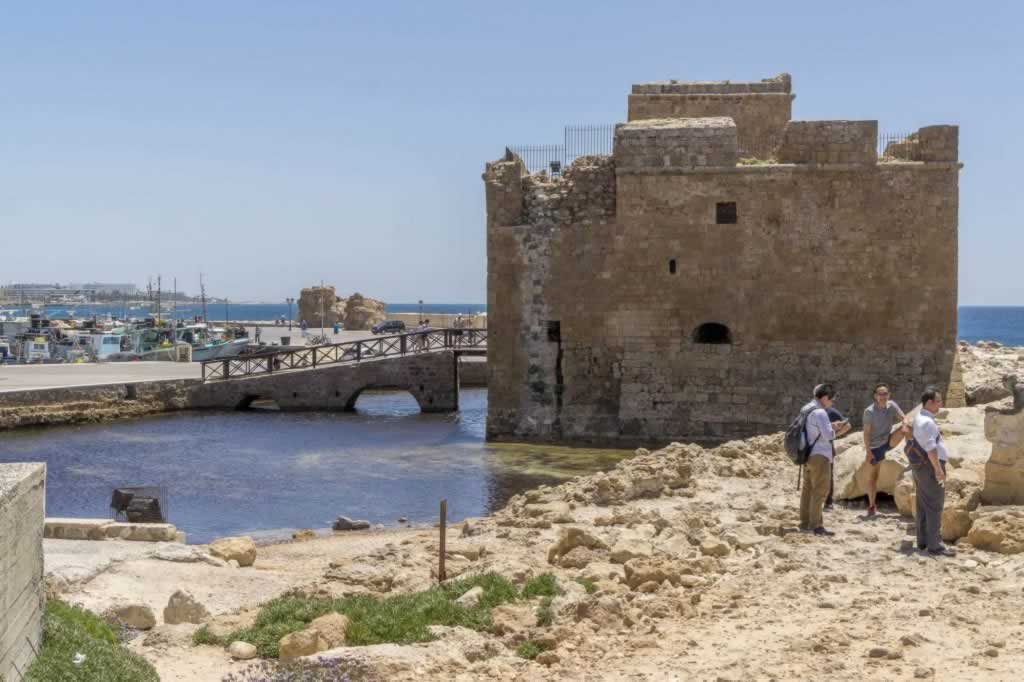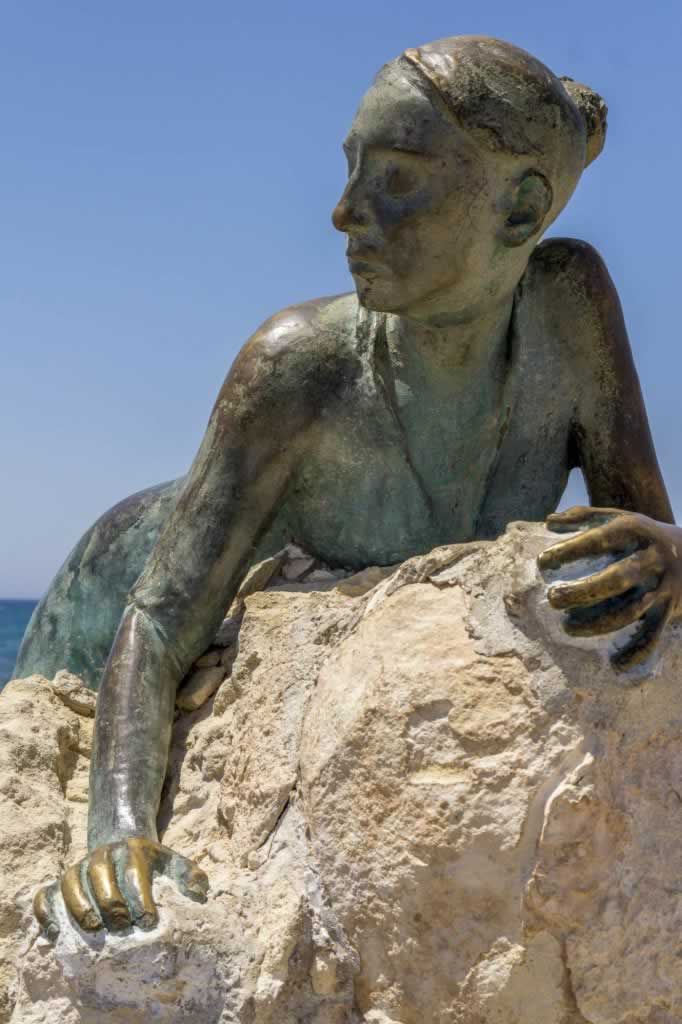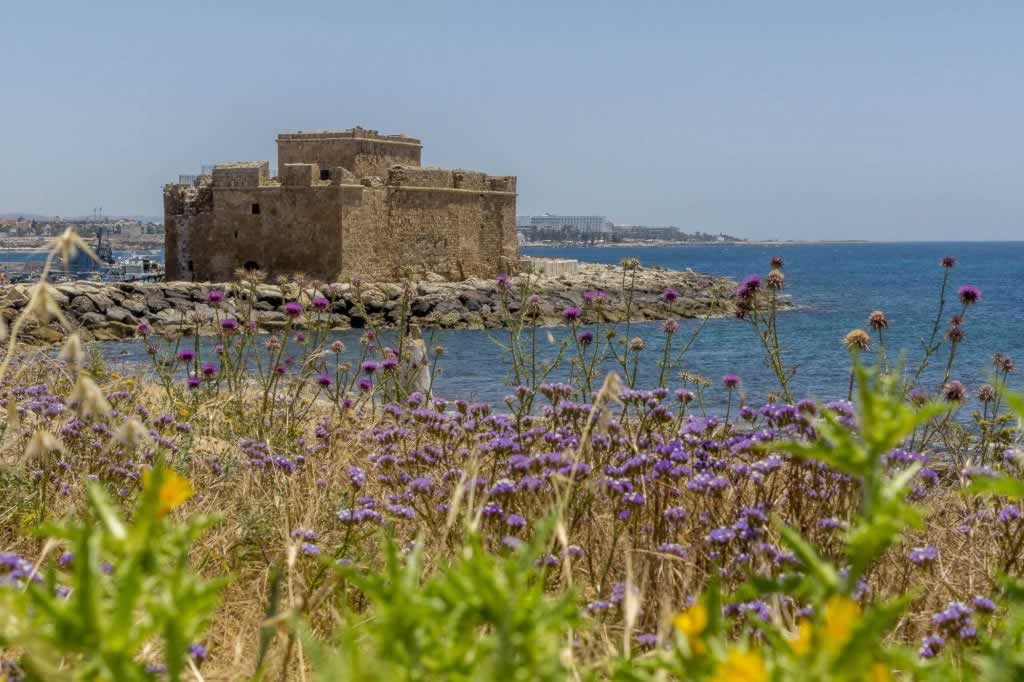Paphos Castle is one of the most iconic medieval castles in Cyprus. This 13th century fortress overlooking the sea was built during the Crusades and belongs to the fascinating Lusignan dynasty history of the island.

Main Topics of Paphos Castle: A Medieval Cyprus Landmark
Visitor Information for Paphos Castle
Location: Paphos Harbor, near the Paphos lighthouse
Hours: Open daily, 8am to 5pm (last entrance 4:30pm)
Entry fee: 2.50 Euros
Getting there: Paphos Castle can be reached by car or taxi, with parking areas nearby. It’s also walkable from hotels along the Paphos beachfront.
Public buses from Paphos central station stop within a 10 minute walk of the castle. Look for routes with stops at Paphos Harbor, the Odeon Bus Station, or the Paphos Lighthouse.
Guided tours: Audio guides are available to rent onsite and guided group tours can be arranged through agencies like Visit Cyprus.
Facilities: There is a gift shop and small cafe kiosk on the castle grounds. Restrooms are located near the entrance in the ticketing area.
Accessibility: Some uneven terrain and stairs make access a little more challenging for wheelchairs and strollers. But much of the main courtyard and museum displays are still accessible. Visitors should contact staff ahead of time to check current accessibility options.
Nearby attractions: Kato Paphos Archaeological Park, Tombs of the Kings, Paphos Lighthouse, Paphos Harbor, Paphos Archaeological Museum.
The castle is also a short drive from beaches such as Coral Bay, wineries, churches, and other cultural sites around Paphos and western Cyprus.
Paphos Castle Facts & History
A Defensive Crusader Castle
As a defensive castle, Paphos Castle was strategically built by the Mediterranean sea to protect the harbor. The castle architecture combines Byzantine and Venetian influences, with thick walls, dungeons, towers, and ornate Gothic features.
During the Middle Ages, Paphos Castle and Cyprus played an important role in the Crusades. The castle was partly built by the Knights Hospitaller, who used it as a headquarters. As one of the main Crusader castles on the island, Paphos Castle defended Cyprus against invaders.
A Crusader Castle and Former Knight’s Headquarters
Paphos Castle has the distinction of being one of Cyprus’s key Crusader castles, built and used by Europeans during the Middle Ages. The seaside fortress was constructed by the Frankish Lusignan dynasty, who had close ties to previous Crusader kingdoms on the mainland.
The Knights Hospitaller religious military order were also involved in early construction phases, using Paphos Castle as their headquarters on the island. These famed Crusader knights added defensive features like dungeons, loopholes, and thick walls to withstand Muslim forces and maintain Christian control.
Dungeons, Prison Cells, and Secret Passages
One of the main highlights of touring Paphos Castle today is exploring its wide array of underground spaces, used as dungeons, store rooms, and prison cells dating from medieval times. The dingy dungeons contained both luxury spaces for noble prisoners of war as well as cramped holding cells for common criminals or unlucky enemies.
The dungeons are joined by a web of secret passages used by the knights and soldiers that once called the castle home.
Narrow spiral staircases also connect the below-ground floors with the grand halls and towers above. Visitors can let their imaginations run wild picturing the medieval secrets and uses of these hidden spaces.
The Rise and Fall of Lusignan Rule
The Lusignan dynasty ruled Cyprus for over 300 years until 1489. They built grand castles like Paphos to fortify their new kingdom. Under the French Lusignan kings, Cyprus became a wealthy island at the crossroads of East and West trade routes.
But eventually the costs of defending Crusader castles like Paphos took a toll. Attacks by Genoese and Mamluk forces contributed to the decline of Lusignan power. After 1489, Venice took control of Cyprus and the castle.
Venetian and Ottoman Alterations
After the last Lusignan ruler eventually ceded Cyprus to Venice in 1489, the Republic of Venice introduced their own changes to Paphos Castle.
The Venetians built new northern and northwest bastions with rounded towers, following the latest Renaissance military architecture styles. They also renovated the Gothic great hall.
Ottoman Turkish rule beginning in 1570 also left its mark through altered castle defenses, like lowered walls and filled-in moats.
Despite the changes by Venice and the Ottomans, Paphos Castle today still largely reflects its original Lusignan Crusader design and imposing medieval character.

This statue guards the Paphos Castle. It has a barcode you can scan to read the story of the artist who created it.
Legends and Ghostly Tales about Paphos Castle
Like many centuries-old castles, Paphos Castle has inspired local legends and ghostly tales over the years. One myth says the famed Byzantine Saint Paul was briefly imprisoned in the castle dungeons while spreading Christianity.
Other tales speak of spirits like the mysterious Pink Lady said to haunt the castle grounds.
According to legend, the so-called Pink Lady was a young woman locked in the castle tower by her father to prevent her from eloping. She allegedly leapt to her death and her lost spirit still roams the parapets and stairwells today.
Whether or not any ghosts actually linger here, the castle’s dramatic history and eerie corners provide a beautiful backdrop for such legends.

Visiting This Coastal Cyprus Landmark
Today, Paphos Castle is one of the top attractions and landmarks to see in Paphos. The well-preserved medieval architecture offers a glimpse into Cyprus history and the Crusader era.
Inside the castle walls, visitors can explore the dungeons, upper halls, and stunning sea views. The castle also houses a small museum with artifacts discovered on site. As one of the most picturesque coastal castles in the Mediterranean, Paphos Castle is an unmissable Cyprus attraction for history lovers.
From the castle’s lofty walls and towers, you can take in extraordinary panoramic views over Paphos Harbor, the sea, and surrounding areas. The blue waters stretching into the distance perfectly complement the sandy stone hues of the ancient castle.
Watching the sunset from Paphos Castle is an especially magical experience. Daytime views are not too shabby, either, as you can see from my photos of Paphos Castle below.
- Dingli Cliffs: How To Visit Malta’s Highest Point - April 24, 2024
- Blue Grotto Malta - April 23, 2024
- Ramla Beach Gozo, Maybe the Best in Malta - April 9, 2024

